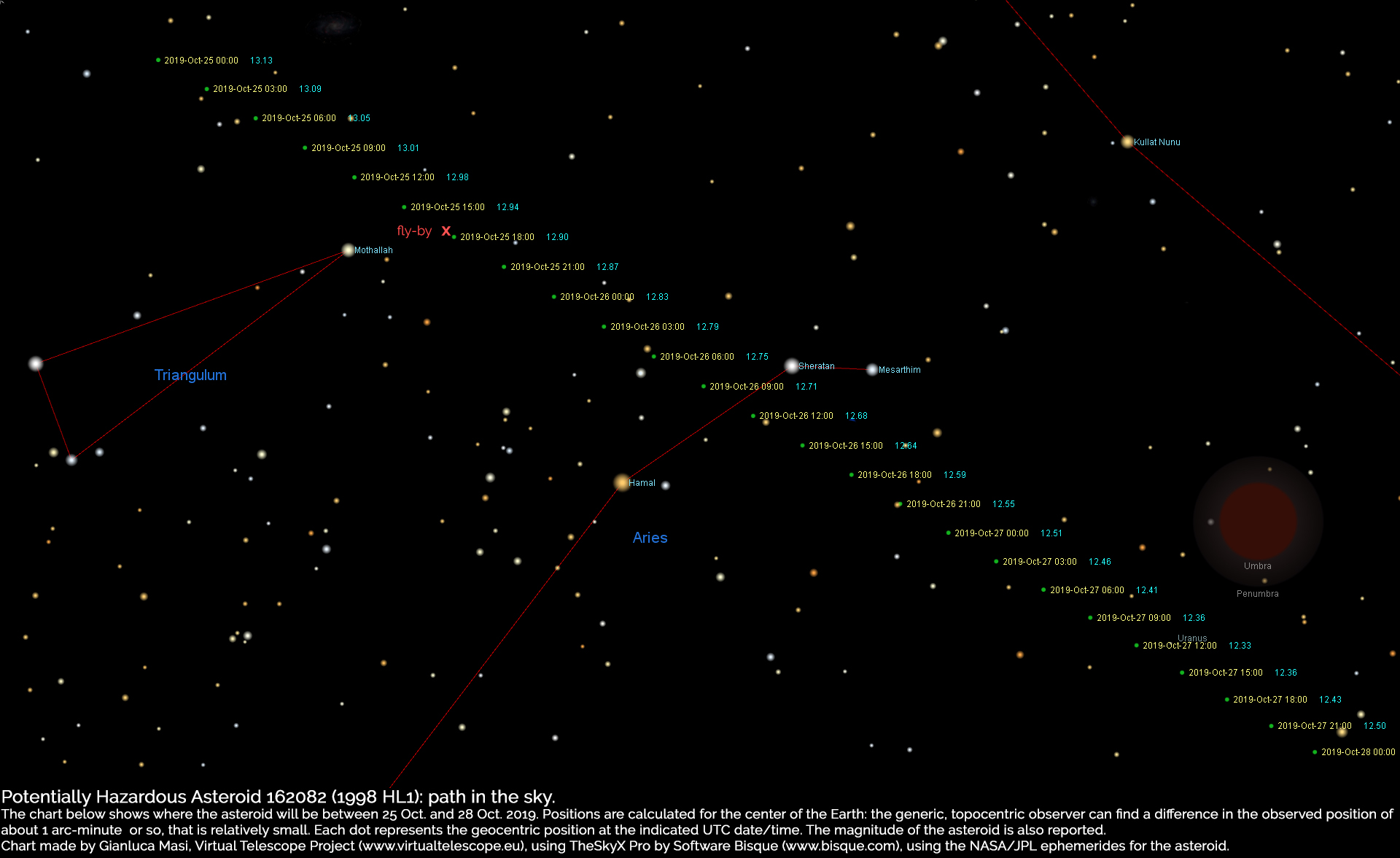An Asteroid the Size of a Skyscraper Just Flew by Earth (Video)
An enormous asteroid flew by Earth today (Oct. 25), and you can watch it zip by in a video from the Virtual Telescope Project.
Asteroid 1998 HL1 was 3.86 million miles (6.21 million kilometers) away from Earth — about 10 times the average distance to the moon — when it makes its closest approach at 1:17 p.m. EDT (1717 GMT), according to NASA.
The Virtual Telescope Project, an online observatory founded by astrophysicist Gianluca Masi of the Bellatrix Astronomical Observatory in Ceccano, Italy, hosted a live webcast about the asteroid during the close encounter today. You can watch a replay here at the Virtual Telescope Project's website.
Video: Giant Asteroid 1998 HL1 Seen by Virtual Telescope Project
Related: Potentially Dangerous Asteroids (Images)
NASA classifies asteroid 1998 HL1 as "potentially hazardous" because the space rock has the "potential to make threatening close approaches to the Earth." That doesn't mean the asteroid poses a threat this time around. The agency defines all asteroids whose orbits around the sun come within 4.6 million miles (7.8 million km) of Earth's orbit, and that have a diameter of at least 500 feet (meters) as "potentially hazardous asteroids."
Asteroid 1998 HL1 measures about 1,800 feet (550 m) in diameter, or about the height of the Sears Tower in Chicago, according to NASA's Jet Propulsion Laboratory. "This will make it quite bright around the time of the flyby," Masi wrote in a description of today's webcast.
Today's flyby will be the closest one until Oct. 26, 2140, when it will be just slightly closer to Earth at a distance of 3.84 million miles (6.18 million km). So, 1998 HL1 won't pose a real threat to Earth for the foreseeable future.
Breaking space news, the latest updates on rocket launches, skywatching events and more!
- The Hunt for Dangerous Asteroids: Here's How Scientists Do It
- Incoming! How NASA and FEMA Would Respond to an Asteroid Threat
- About 17,000 Big Near-Earth Asteroids Remain Undetected
Email Hanneke Weitering at hweitering@space.com or follow her @hannekescience. Follow us on Twitter @Spacedotcom and on Facebook.

Hanneke Weitering is a multimedia journalist in the Pacific Northwest reporting on the future of aviation at FutureFlight.aero and Aviation International News and was previously the Editor for Spaceflight and Astronomy news here at Space.com. As an editor with over 10 years of experience in science journalism she has previously written for Scholastic Classroom Magazines, MedPage Today and The Joint Institute for Computational Sciences at Oak Ridge National Laboratory. After studying physics at the University of Tennessee in her hometown of Knoxville, she earned her graduate degree in Science, Health and Environmental Reporting (SHERP) from New York University. Hanneke joined the Space.com team in 2016 as a staff writer and producer, covering topics including spaceflight and astronomy. She currently lives in Seattle, home of the Space Needle, with her cat and two snakes. In her spare time, Hanneke enjoys exploring the Rocky Mountains, basking in nature and looking for dark skies to gaze at the cosmos.


